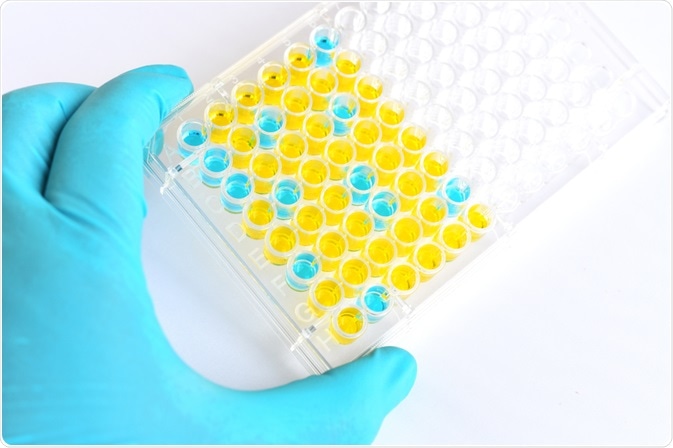An assay is an analytical procedure capable of quantitatively or qualitatively determining the presence, concentration, or activity of a target analyte in a sample.
 Image Credit: Jarun Ontakrai / Shutterstock
Image Credit: Jarun Ontakrai / Shutterstock
Assays are used in a diverse range of fields within the life sciences, and have become routine work in forensic, pharmaceutical, and microbiology labs.
Considerations for assay design
When designing an assay for any purpose, the entire workflow process from sample collection to data analysis must be considered.
The first consideration is the exact molecule and parameter under investigation. Molecules and biomolecules may come in various forms, chemically and physically distinct from one another, thus the assay must be capable of differentiating between them.
Additionally, assay design may differ depending on the parameter under investigation, such as the difference in determining the concentration of an enzyme in a sample compared with determining the activity of an enzyme in a sample.
Assays intended for use in the field, or other non-laboratory environments, may be intended to merely detect the presence of a particular molecule so that samples can be passed on for more serious investigation. Therefore, the ability to determine any other properties of the sample is unnecessary.
The source of the sample should also be considered, as the sample may need to undergo pre-treatment steps before the assay can take place, volumes of sample may be limited or scarce, samples may be unstable during periods of storage, or other factors may impact the design of the assay.
The number and variety of samples to be assayed should also be considered, as a multi-step, labor-intensive assay is clearly unsuitable if thousands of samples must be tested, while this may be suitable as a novel assay with only a few samples.
Key points in assay design
No matter the intended function or mechanism of an assay, several key points remain relevant and must be addressed.
Specificity
Having determined the target analyte of an assay, the specificity of the assay towards that molecule must be confirmed. If other molecules in the sample are able to interact with the assay in a way that is indistinguishable from the target molecule, then false positives may be a frequent unintended outcome.
Sensitivity
The sensitivity of an assay can be tuned depending on the requirements of the data produced, the type of molecule of interest, and the quantity of sample available. Importantly, the assay must be sensitive enough that the molecule concentration falls within the dynamic range of the assay. The dynamic range is the concentration range at which the response of the assay is directly proportional to the concentration of the target molecule, allowing the quantity of analyte present to be determined.
Reproducibility
Assays should be robust and reliable, able to produce the same result from repeated tests despite changes in sample preparation and handling, environmental conditions, or the individual performing the procedure.
If the intention of the assay is to measure the absolute, rather than relative, amount of a molecule in a sample then an accepted standard of that molecule in the particular assay must be established.
Reporter Compounds
Molecules that interact with the target analyte are often employed in assays, and these must be ensured to not also interact with other molecules present in the sample. Samples analyzed in this way must often be disposed of following the assay, leading to alternative, label-free assays to be developed. These avoid some of the artefacts caused by the presence of reporter compounds, and allow for the screening of molecules in disease-relevant primary stem cells.
Further Reading